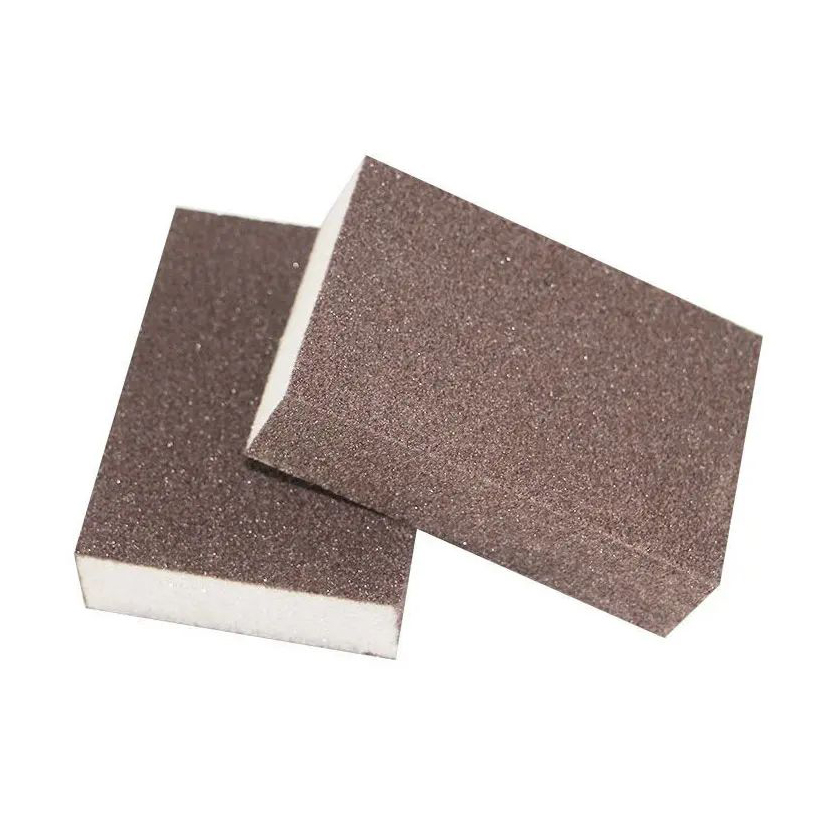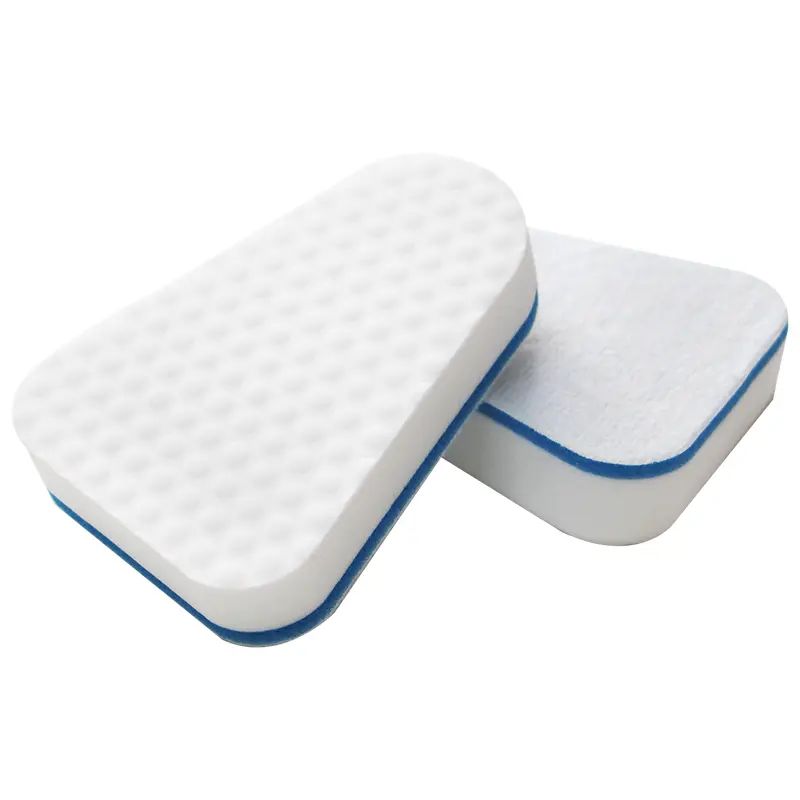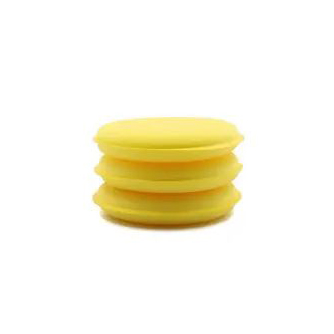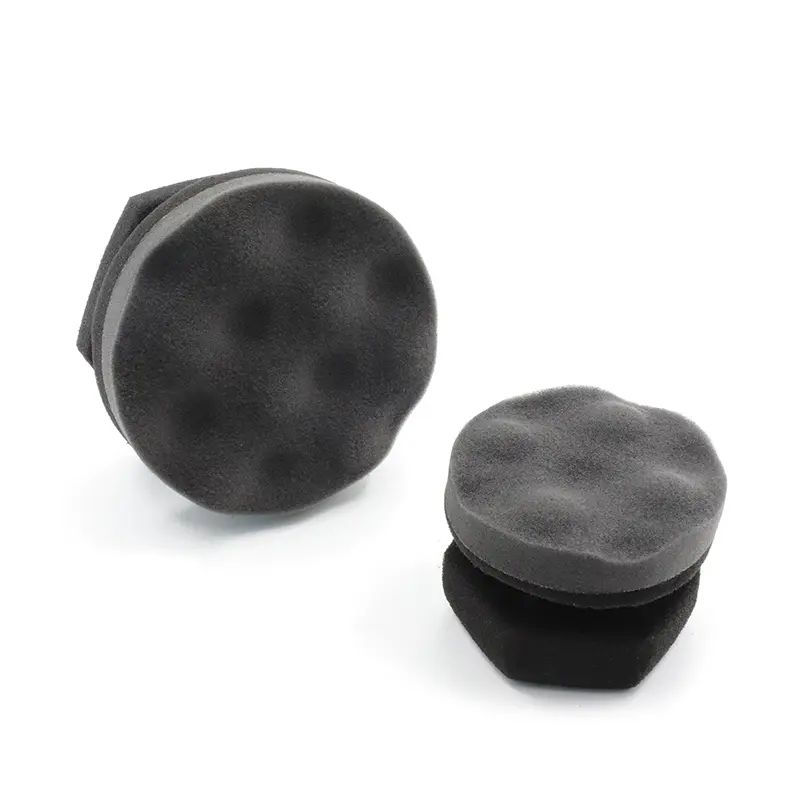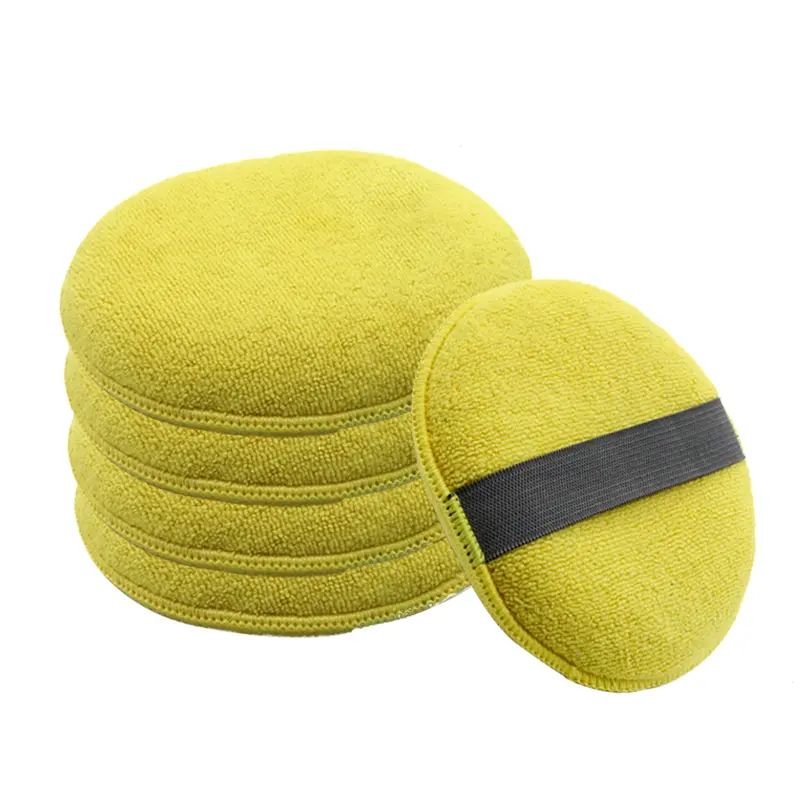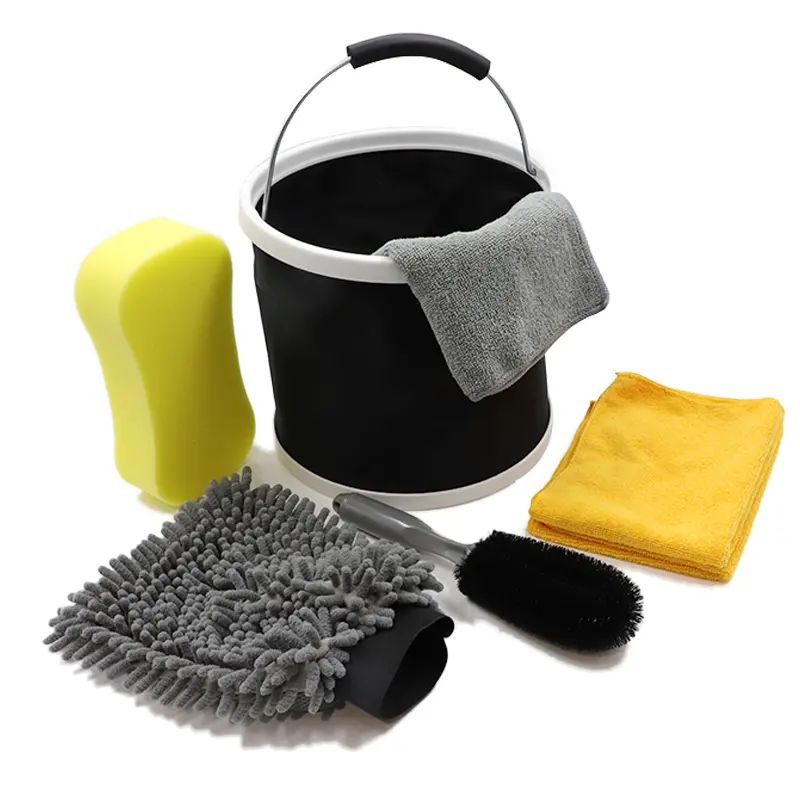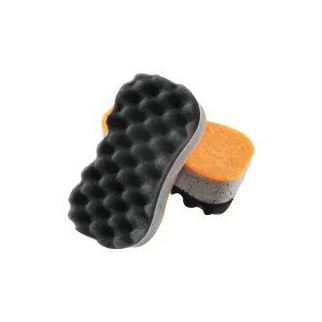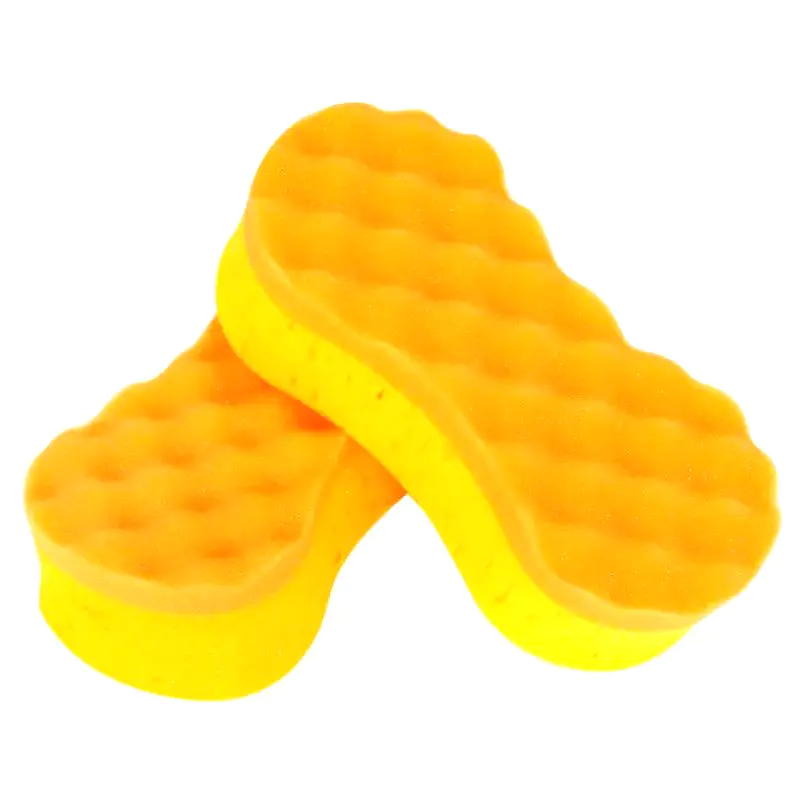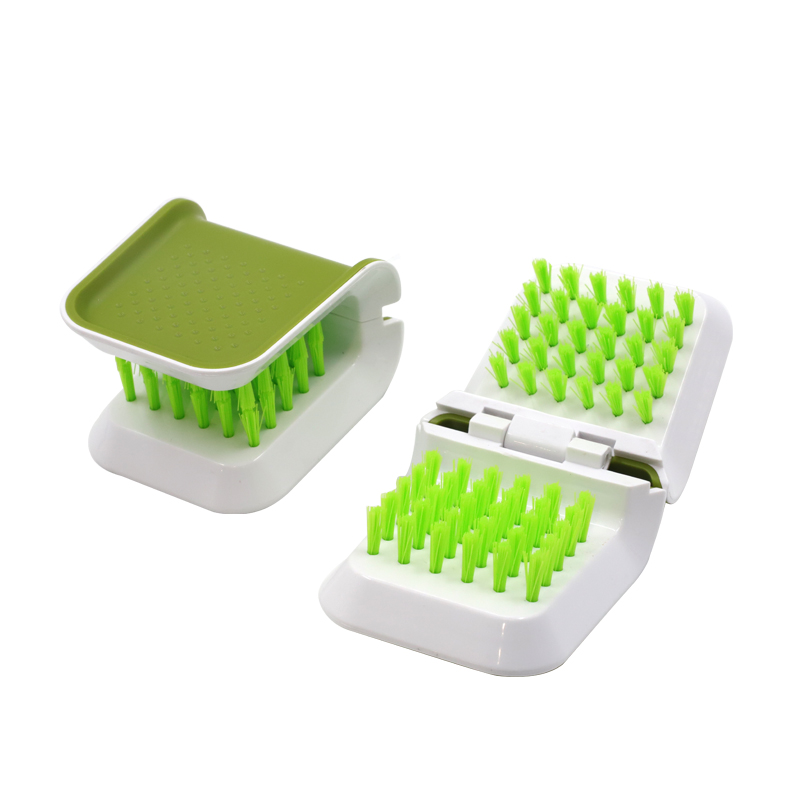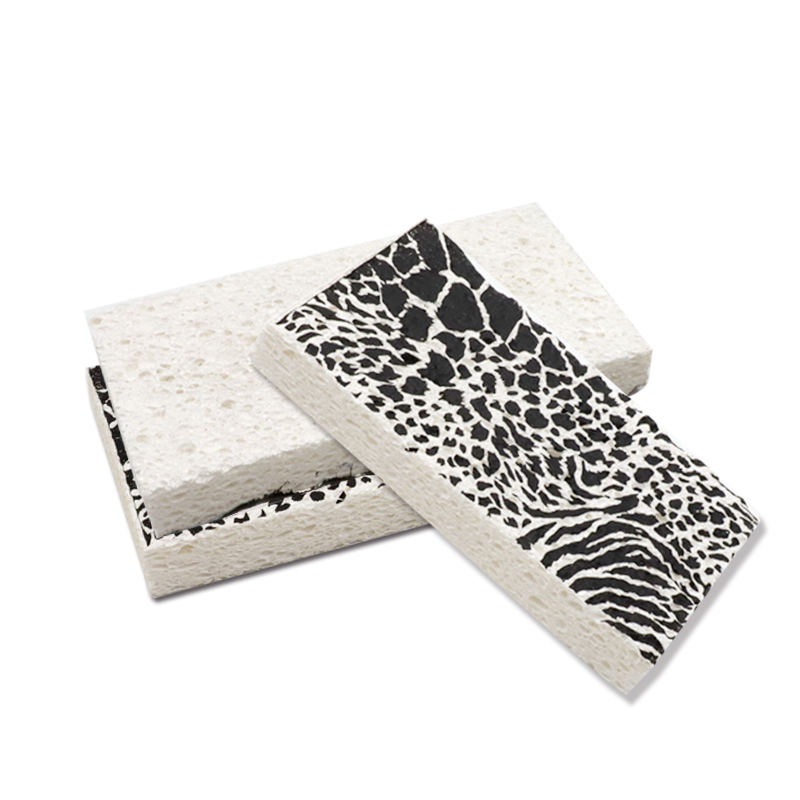Kitchen Clean Sponge vs. Magic Eraser:Which Works Best in the Kitchen?
Keeping your kitchen spotless is never easy. From greasy pans to stubborn stains on countertops, choosing the right cleaning tool can make a huge difference. Two of the most popular options are the kitchen clean sponge and the Magic Eraser. But when it comes to real-world performance, which works best in the kitchen?
What Is a Kitchen Clean Sponge?
The kitchen clean sponge is one of the most essential tools in any household. It is a small, lightweight cleaning implement primarily used for washing dishes, wiping surfaces, and general kitchen cleaning tasks. Over the years, sponges have evolved in design and material to cater to different cleaning needs. A typical kitchen sponge can absorb water and soap efficiently, allowing it to remove grease, dirt, and food residues effectively.
Kitchen sponges usually come in several forms, each designed for a specific purpose:
Cellulose Sponge
The cellulose sponge is soft, highly absorbent, and often considered the classic sponge. It is made from natural wood fibers, which allow it to soak up large amounts of water quickly. This type of sponge is ideal for washing delicate items like glasses and plates because it does not scratch surfaces. Additionally, its softness makes it gentle on hands during prolonged cleaning sessions.
Scrubber Sponge
The scrubber sponge combines the absorbent properties of a sponge with an abrasive side, usually made from synthetic fibers or scouring pads. This dual design allows it to tackle tougher stains and stuck-on food from pots, pans, and grills. While the scrubber side is excellent for heavy-duty cleaning, it should be used carefully on non-stick surfaces to prevent scratches.
Eco-friendly Sponge
With increasing environmental awareness, eco-friendly sponges have become popular. These are often made from natural fibers such as coconut husks, loofahs, or biodegradable cellulose. Eco-friendly sponges are compostable, reducing environmental waste. They are effective for cleaning but may wear out faster than synthetic sponges. Their natural composition makes them less likely to contain harmful chemicals.

Pros of Kitchen Clean Sponge
Using a kitchen clean sponge has several advantages that make it a staple in households:
Inexpensive and Widely Available
Cost-effectiveness is one of the main advantages of kitchen sponges. They are inexpensive to purchase and available in almost every supermarket or online store. Most brands offer multi-packs, making them convenient and economical for everyday use. For households on a budget, a few dollars can provide several weeks of cleaning utility.
Versatile Usage
Another key benefit is their versatility. Kitchen sponges can be used to clean a variety of surfaces, including dishes, glasses, pots, pans, and even kitchen countertops. Some sponges are designed to handle multiple cleaning tasks simultaneously, such as wiping a countertop while scrubbing a pan. This makes them indispensable for busy kitchens where efficiency is important.
Compatible with Cleaning Solutions
Kitchen sponges are highly compatible with dish soaps and other cleaning solutions. Their porous structure allows them to hold soap, detergents, or natural cleaning agents like vinegar and baking soda. This maximizes cleaning efficiency by distributing soap evenly across surfaces and helping remove stubborn stains without excessive effort.
Cons of Kitchen Clean Sponge
Despite their usefulness, kitchen sponges have some drawbacks that need to be managed carefully:
Bacterial Growth
One of the main issues is that kitchen sponges can harbor bacteria if not replaced regularly. Sponges remain moist during use, providing an ideal environment for bacteria, mold, and yeast to grow. If not cleaned or replaced frequently, this can lead to cross-contamination and potentially affect food safety.
Durability Concerns
Another disadvantage is that sponges wear out quickly with heavy use. Continuous scrubbing, especially on rough surfaces or with abrasive cleaning products, can break down the sponge’s fibers. Over time, the sponge loses its absorbency and effectiveness, requiring frequent replacement.
Need for Frequent Sanitization
Because of bacterial growth and residue accumulation, kitchen sponges require regular sanitization. Common methods include microwaving a damp sponge for a few minutes, boiling it in water, or placing it in the dishwasher. These methods help kill bacteria and extend the life of the sponge, but they add an extra step to routine cleaning.
Sanitization Methods Comparison
| Method | Effectiveness | Pros | Cons |
|---|---|---|---|
| Microwave | High | Kills most bacteria quickly | Sponges must be wet; risk of fire if dry |
| Boiling | Moderate | Simple and chemical-free | Time-consuming; may shorten sponge life |
| Dishwasher | High | Convenient; combines cleaning and sanitizing | Requires dishwasher; may not reach all areas |
What Is a Magic Eraser?
The Magic Eraser is a unique cleaning tool made from melamine foam, a material that acts as an ultra-fine abrasive. Unlike traditional sponges, which rely on soap and scrubbing to remove dirt, the Magic Eraser works more like microscopic sandpaper. When it comes into contact with a surface, its tiny foam structure physically lifts stains and grime, often requiring only water to activate the cleaning power.
Invented in the early 2000s, the Magic Eraser has gained popularity for its ability to tackle stubborn household stains that traditional cleaning tools struggle with. Its versatility extends to kitchens, bathrooms, and even living areas, making it a convenient all-in-one cleaning solution.
Composition and Mechanism
The Magic Eraser is primarily composed of melamine resin foam. When dry, it feels soft and light, but when wet, it becomes slightly firmer and more effective at scrubbing. The micro-abrasive structure allows the foam to penetrate tiny grooves and textures on surfaces, effectively lifting dirt, grease, and scuff marks.
How It Differs from Regular Sponges
Unlike cellulose or scrubber sponges, which rely on soap or detergents for cleaning, the Magic Eraser removes stains through mechanical action. This makes it particularly useful for situations where chemical cleaners are less effective or undesirable. The foam wears away as it cleans, which is why it gradually diminishes in size with repeated use.
Pros of Magic Eraser
The Magic Eraser offers several advantages that make it a popular choice for household cleaning:
Extremely Effective on Tough Stains
One of the strongest points of the Magic Eraser is its ability to tackle difficult stains. It can remove burnt-on grease from stovetops, crayon marks from walls, soap scum in bathrooms, and even scuff marks from floors. The abrasive yet gentle action allows it to work on stains that traditional sponges or cloths cannot remove easily.
Works on Multiple Surfaces
The Magic Eraser is highly versatile and can be used on a wide range of surfaces. Common applications include:
- Kitchen countertops and stovetops
- Bathroom tiles, sinks, and tubs
- Appliances such as refrigerators and microwaves
- Walls and baseboards to remove fingerprints and scuffs
Easy to Use
Another advantage is its simplicity. To use, one only needs to wet the eraser under water, squeeze out excess liquid, and gently rub the stain. There is no need for additional soap, chemicals, or scrubbing tools, making it convenient for quick cleaning tasks. Its lightweight and ergonomic design also allow it to reach corners and edges easily.
Cons of Magic Eraser
Despite its effectiveness, the Magic Eraser has several limitations and precautions that should be considered:
Wears Down Quickly
Since the Magic Eraser works through physical abrasion, it wears down rapidly during use. For heavy cleaning tasks, multiple erasers may be needed, increasing the cost over time compared to traditional sponges or cloths. It is not suitable for tasks where repeated scrubbing over large areas is required.
Not Recommended for Delicate Surfaces
The abrasive nature of the Magic Eraser makes it unsafe for delicate or coated surfaces. Non-stick pans, polished surfaces, and certain plastics may be scratched if cleaned with a Magic Eraser. It is always advisable to test a small hidden area before full application to prevent permanent damage.
Can Leave Marks on Glossy or Painted Surfaces
Another drawback is that it may leave dull streaks or scratches on high-gloss paints or varnished surfaces. While it can remove scuffs and dirt, overuse or heavy pressure can damage the finish, requiring polishing or repainting afterward.
Surface Compatibility Comparison
| Surface | Recommended Use | Precautions |
|---|---|---|
| Countertops (laminate, stone) | Yes | Test small area first; avoid prolonged scrubbing |
| Non-stick cookware | No | Can remove coating and cause damage |
| Painted walls | Occasional use | Use gentle pressure; avoid glossy or delicate finishes |
| Bathroom tiles | Yes | Safe for grout and ceramic; rinse after use |
Kitchen Clean Sponge vs. Magic Eraser: Head-to-Head Comparison
Choosing the right cleaning tool for your home not only improves cleaning efficiency but also helps extend the lifespan of household items. The Kitchen Clean Sponge and Magic Eraser are two commonly used cleaning tools, but they have distinct characteristics and ideal usage scenarios.
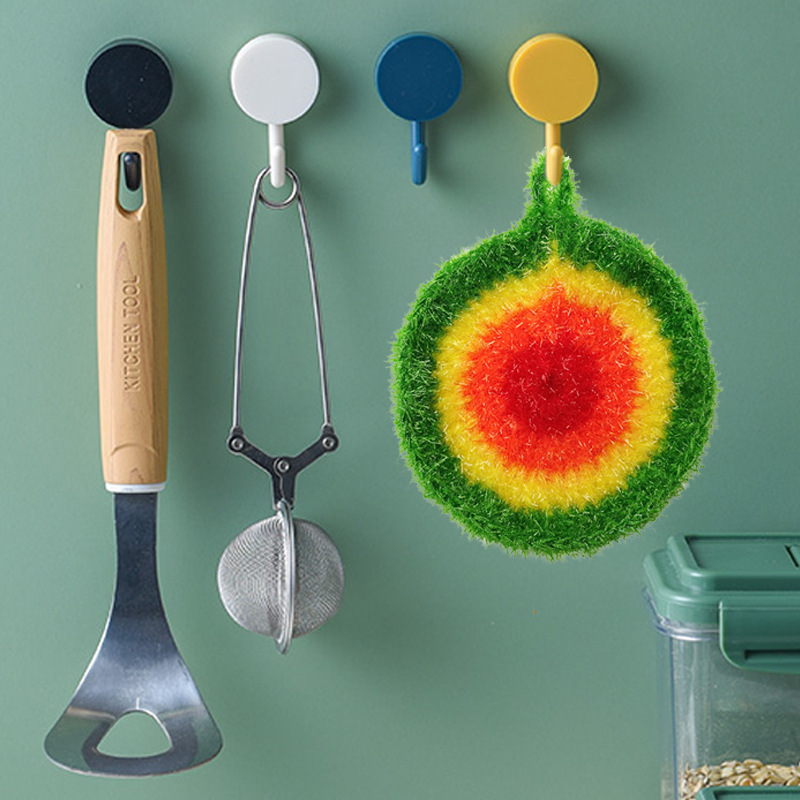
Cleaning Power
Kitchen Clean Sponge Cleaning Power
The Kitchen Clean Sponge is primarily made of porous sponge material. It is soft yet resilient, making it suitable for everyday kitchen cleaning. Its cleaning performance includes:
- Daily Dishwashing: The sponge is ideal for washing plates, pots, pans, and utensils with typical oil stains and food residues. Its porous structure effectively absorbs grease and dirt, leaving dishes clean.
- Light Stain Removal: It can handle light stains on countertops, tables, glassware, and kitchen appliances.
- Gentle Cleaning: Due to its soft material, it won’t easily scratch coated cookware or stainless steel, making it safe for everyday use.
Magic Eraser Cleaning Power
The Magic Eraser is made from high-density microfoam, which removes stubborn stains and dirt through fine physical abrasion. Its cleaning capabilities include:
- Stubborn Stain Removal: It easily eliminates marks from walls, door frames, shoes, bathroom tiles, and other surfaces, particularly effective on greasy stains, tea stains, water stains, and limescale.
- Deep Cleaning: The high-density foam can reach tiny grooves and textures to remove accumulated dirt thoroughly.
- Efficient and Labor-Saving: Compared to regular sponges, it requires less scrubbing effort while achieving remarkable results, especially for long-standing stains.
Durability
Kitchen Clean Sponge Durability
The durability of a Kitchen Clean Sponge is moderate:
- Limited Lifespan: The sponge gradually wears out with daily use, especially when cleaning hard utensils or heavily greasy pans. It can tear or shed fibers.
- Regular Replacement: It is recommended to replace the sponge every 1–2 weeks to maintain cleaning effectiveness and prevent bacterial buildup.
- Antibacterial Options: Some sponges contain antibacterial materials, but they should still be replaced regularly to avoid odors and bacteria accumulation.
Magic Eraser Durability
Magic Erasers have relatively low durability, particularly for large cleaning tasks:
- Prone to Crumbling: The high-density foam gradually breaks down with friction, producing debris after a few uses.
- Short-Term Use: Usually intended for specific stubborn stains; each piece has a limited lifespan.
- Cost Consideration: Although individually priced higher, frequent replacement may make long-term costs higher than regular sponges.
Safety
Kitchen Clean Sponge Safety
The Kitchen Clean Sponge is generally safe:
- Wide Compatibility: Safe for most tableware, glass, ceramics, and stainless steel surfaces without scratching.
- Non-Toxic: Typically free from harmful chemicals, making it safe for daily use.
- Versatile: Can be used in the kitchen, bathroom, and other household areas with minimal risk.
Magic Eraser Safety
Magic Erasers have some safety limitations:
- May Scratch Surfaces: Their abrasive microfoam can scratch coatings, stainless steel, and sensitive materials such as car paint, wooden furniture, or mirrors.
- Caution for Children: Debris may pose a choking risk if ingested by children; supervision is recommended.
- Avoid Prolonged Contact: Gloves are advised during use, and testing on inconspicuous areas is recommended to prevent damage.
Price
Price is an important factor in selecting cleaning tools:
| Tool Type | Price Range | Usage Cost | Cost-Effectiveness |
|---|---|---|---|
| Kitchen Clean Sponge | Very affordable | Weekly replacement, low cost | High cost-effectiveness, ideal for daily use |
| Magic Eraser | More expensive | Short lifespan per piece, frequent replacement | Effective for single-use cleaning, higher long-term cost |
The Kitchen Clean Sponge is very budget-friendly; even frequent replacement does not significantly impact household expenses. In contrast, Magic Erasers are pricier and wear out quickly, leading to higher long-term costs. However, they save cleaning time when dealing with stubborn stains.
Best Use Cases
Kitchen Clean Sponge Best Use Cases
- Daily Dishwashing: Ideal for cleaning plates, pots, pans, and utensils with routine stains.
- Light Spill and Grease Wiping: Effective on kitchen countertops, tables, and microwave surfaces for everyday cleaning.
- General Household Cleaning: Safe and economical for bathroom surfaces, furniture, and light cleaning tasks.
Magic Eraser Best Use Cases
- Deep Cleaning: Effective on greasy stovetops, bathroom tiles, doors, windows, and shoes with stubborn marks.
- Restoring Surface Shine: Removes long-term dirt to restore the original color and luster of walls, door frames, and plastic items.
- Targeted Stubborn Stains: Particularly useful for old furniture or surfaces that haven’t been cleaned for a long time.
How to Use Them Together for Best Results
When it comes to household cleaning, many people feel torn between Kitchen Clean Sponges and Magic Erasers. Each tool has its unique strengths, but relying on just one can limit your cleaning efficiency. By strategically using both tools together, you can achieve a cleaner, safer, and more time-efficient home environment.
Understanding the Strengths of Each Tool
Kitchen Clean Sponge Strengths
The Kitchen Clean Sponge excels in areas that require gentle yet thorough cleaning. Its main advantages include:
- Gentle on Surfaces: Ideal for coated cookware, glassware, and stainless steel that could be scratched by harsher materials.
- Daily Maintenance: Perfect for wiping counters, washing dishes, and cleaning up light spills before they harden.
- Absorbency: Its porous material can absorb liquid spills quickly, making it highly effective for kitchens and bathrooms.
- Ease of Use: Soft and flexible, the sponge can reach into cups, bowls, and minor crevices without causing damage.
Magic Eraser Strengths
The Magic Eraser, on the other hand, is a powerhouse for stubborn stains and grime. Its advantages include:
- Deep Cleaning Power: Able to remove tough marks, dried-on grease, and scuff marks from walls, doors, and tiles.
- Restorative Cleaning: Can rejuvenate surfaces that have lost their original look due to dirt buildup over time.
- Time Efficiency: Requires less scrubbing effort to remove deeply embedded stains compared to regular sponges.
By understanding the strengths of each tool, you can assign them to tasks where they perform best, ensuring both efficiency and surface safety.
Step-by-Step Routine for Using Both Tools
Step 1: Start with the Kitchen Clean Sponge
- Initial Wipe Down: Use the sponge to remove daily dirt, light grease, and spills. For example, wipe down kitchen counters, dining tables, and stovetops before applying stronger cleaning agents.
- Dishwashing: Clean plates, bowls, utensils, and pots using the sponge. Its softness prevents scratches while effectively removing food residues.
- Absorb Excess Liquids: If a spill has occurred, sponge up the liquid first to prevent the spread of grime.
Step 2: Follow Up with the Magic Eraser for Stubborn Spots
- Targeted Stain Removal: After daily cleaning with the sponge, inspect surfaces for stubborn marks, like crayon lines on walls or soap scum in the bathroom.
- Deep Cleaning Tiles and Grout: Dampen the Magic Eraser slightly and gently rub tiles or grout lines to remove embedded grime.
- Tough Grease on Appliances: For oven doors, microwaves, or stovetops with baked-on grease, use the Magic Eraser carefully to restore the surface.
Step 3: Combine for Tough Surfaces
- Dual Action on Pots and Pans: For heavily stained cookware, first soak and scrub with a Kitchen Clean Sponge to remove surface debris, then lightly use the Magic Eraser to tackle residual stains without damaging the material.
- Bathroom Fixtures: Wipe faucets and sinks with a sponge first to remove soap and water residue, then use the Magic Eraser to remove hard water stains or stubborn soap scum.
Recommended Task Table
| Task | Recommended Tool | Technique | Notes |
|---|---|---|---|
| Daily dishwashing | Kitchen Clean Sponge | Circular scrubbing, warm water | Gentle on nonstick surfaces |
| Light spills on countertops | Kitchen Clean Sponge | Dab and wipe | Absorbs liquid quickly |
| Wall scuff marks | Magic Eraser | Light pressure, dampen slightly | Test on small area first |
| Bathroom tiles & grout | Magic Eraser | Gently rub in sections | Use only on non-delicate surfaces |
| Oven stovetop grease | Magic Eraser + Sponge | Sponge first, then erase remaining spots | Prevents scratching and maximizes efficiency |
| Stained cookware | Sponge + Magic Eraser | Soak, scrub with sponge, finish with eraser | Use lightly to avoid surface damage |
Tips for Maximizing Lifespan and Safety
Kitchen Clean Sponge
- Regular Replacement: Replace every 1–2 weeks to avoid bacteria accumulation.
- Proper Drying: Squeeze out excess water and allow the sponge to air dry to prolong life.
- Antibacterial Option: Consider sponges with antibacterial properties for added hygiene.
Magic Eraser
- Moist Use: Slightly dampen before use to prevent rapid crumbling.
- Spot Testing: Always test on an inconspicuous area to ensure it does not damage the surface.
- Single-Purpose Segmentation: Use different Magic Erasers for kitchens, bathrooms, and walls to avoid cross-contamination.
Integrating Both Tools into a Cleaning Schedule
A smart approach is to integrate both tools into a weekly cleaning routine:
- Daily Tasks: Focus on Kitchen Clean Sponge for dishwashing, counter wipes, and minor spills.
- Weekly Deep Cleaning: Reserve Magic Erasers for walls, tiles, appliances, and areas with accumulated grime.
- Monthly Review: Inspect high-use surfaces for stubborn stains and apply Magic Eraser as needed.
By combining daily sponge maintenance with targeted Magic Eraser cleaning, you create a system that balances efficiency, safety, and cost. Surfaces remain protected, cleaning time is reduced, and you maximize the strengths of both tools without unnecessary wear.
PREVNo previous article
NEXTHow to Choose a Cellulose Sponge for Home Cleaning: A Comprehensive Guide
News Category
- Company News(31)
- Industry News(119)

 简体中文
简体中文 English
English 日本語
日本語 русский
русский Español
Español عربى
عربى Français
Français Português
Português